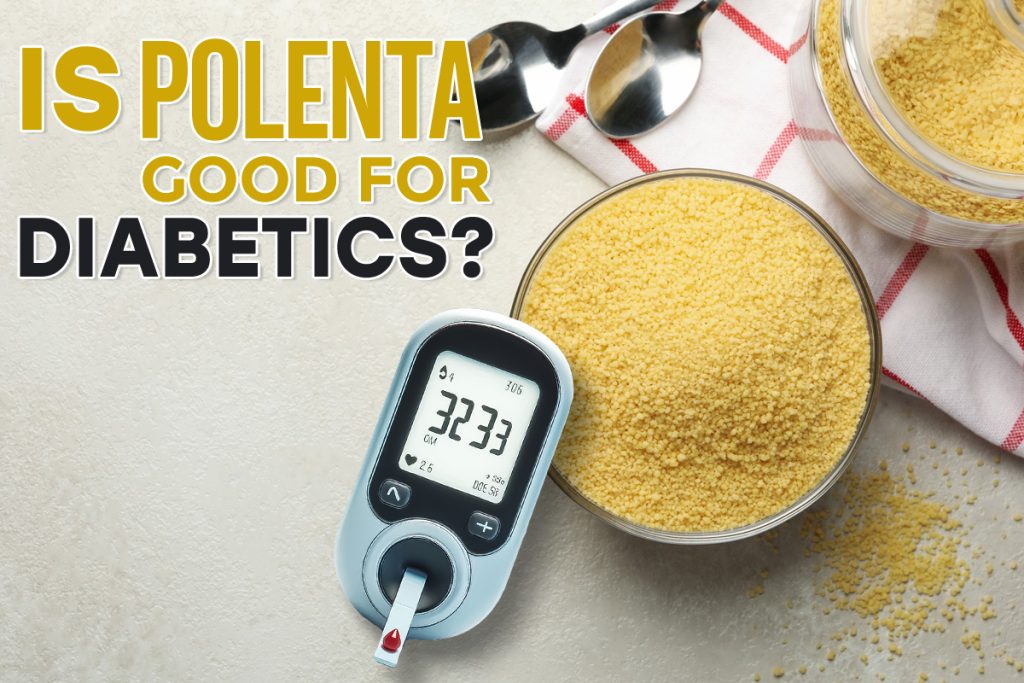Polenta, a dish made from boiled cornmeal, is a staple in many cuisines worldwide. It is often enjoyed as a creamy porridge or allowed to set and then sliced for various recipes. But is polenta a good choice for diabetics? Let’s explore its nutritional value and impact on blood sugar levels.
Nutritional Profile of Polenta
Polenta is primarily made from cornmeal, which contains carbohydrates, fiber, protein, and small amounts of fat. A typical serving (100g) of cooked polenta provides:
- Calories: ~70
- Carbohydrates: ~15g
- Fiber: ~1-2g
- Protein: ~2g
- Fat: ~0.5g
- Glycemic Index (GI): Moderate (ranges from 68-70)
While polenta contains essential nutrients, it is important to choose whole-grain cornmeal to maximize fiber content. Additionally, portion control is key for diabetics to prevent unwanted blood sugar spikes.
Benefits of Polenta for Diabetics
1. Slow Digestion and Blood Sugar Control
Polenta has a moderate glycemic index, but when paired with fiber-rich foods and proteins, its digestion slows down. This helps prevent sudden blood sugar spikes, making it a viable option for people with diabetes.
2. Gluten-Free Alternative
Since polenta is made from cornmeal, it is naturally gluten-free, making it a great option for diabetics who also have gluten intolerance or celiac disease. Learn more about its gluten-free properties in our article: Is Polenta Gluten Free?.
3. Rich in Antioxidants
Polenta contains carotenoids such as lutein and zeaxanthin, which are beneficial for eye health. Since diabetes can increase the risk of vision problems, consuming antioxidant-rich foods like polenta may help support eye health over time.
4. Low in Fat and Calories
Polenta is naturally low in fat and calories, making it a weight-friendly option for diabetics aiming to maintain a healthy weight. Read more about polenta’s role in weight loss here: Is Polenta Good for Weight Loss?.
Potential Concerns of Polenta for Diabetics
1. Moderate Glycemic Index
Polenta has a GI of around 68-70, which is considered moderate. While it is not as high as some refined carbohydrates, it still requires portion control to avoid significant blood sugar fluctuations.
2. Limited Fiber Content
Compared to whole grains like quinoa or oats, polenta has a lower fiber content. Fiber is essential for slowing down digestion and maintaining stable blood sugar levels. To enhance fiber intake, pair polenta with vegetables, beans, or seeds.
3. Highly Processed Variants
Instant or pre-packaged polenta often contains added sugars and preservatives that may not be ideal for diabetics. Opting for organic, stone-ground polenta is a healthier choice.
How to Make Polenta Diabetes-Friendly
1. Pair with High-Fiber Foods
Adding vegetables like spinach, broccoli, or bell peppers to polenta can increase its fiber content, making it a more balanced meal for diabetics.
2. Incorporate Protein
Combining polenta with lean proteins like grilled chicken, eggs, or tofu helps slow down carbohydrate absorption, reducing the impact on blood sugar levels.
3. Choose Whole-Grain Cornmeal
Whole-grain or stone-ground cornmeal contains more fiber and nutrients compared to refined versions, making it a better option for blood sugar control.
4. Watch Portion Sizes
Since polenta is a carbohydrate-rich food, diabetics should consume it in moderation. A small serving size, combined with protein and fiber, can help maintain stable blood sugar levels.
Conclusion
Polenta can be a part of a diabetes-friendly diet when consumed in moderation and combined with fiber and protein-rich foods. Choosing whole-grain varieties, avoiding processed options, and controlling portions are key to maintaining healthy blood sugar levels. For more diabetic-friendly food choices and nutritional products, visit CyberMart. Always consult a healthcare professional before making dietary changes.




Pingback: Is Polenta Good for Acid Reflux? - Blog By CyberMart USA
Pingback: Are Honey Ohs Gluten Free? - Blog By CyberMart USA